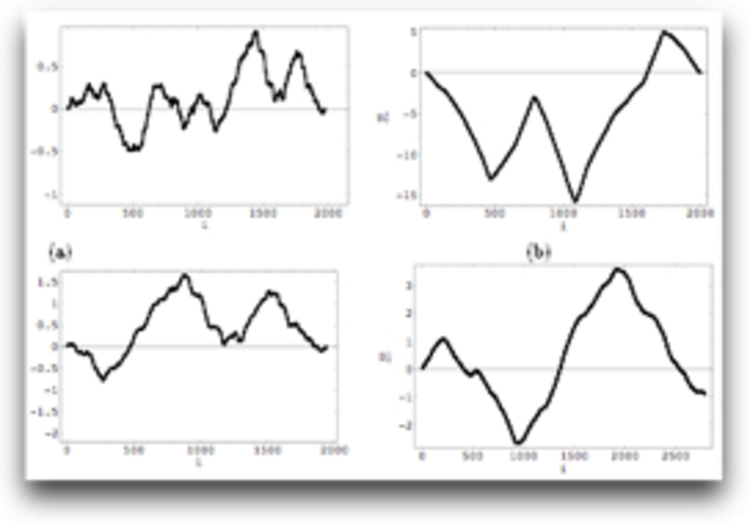
A Monte Carlo Algorithm for Polymer Chains
University of Texas - May 01, 2003
This paper was originally written for my MSc in Computational and Applied Math at the University of Texas, Austin. A link to the full text (PDF) is available at the bottom of this page.
When most of us hear the word “DNA”, we typically think of the famous picture of a “double helix”, a coil of two strands wrapped around each other like a twisted ladder. This image represents a magnified view of DNA, a molecule small enough to fit inside the nucleus of a cell. If we zoomed out from this view, the double helix would become blurred into a single, thin strand, twisting and turning within the viscous goo of the cell. These motions are governed by the laws of thermodynamics and are the subject of my Master’s Thesis, A Monte Carlo Algorithm for Polymer Chains.
Put simply, thermodynamics is the study of energy. The energy of a DNA molecule (termed “chains” in my paper) determines its shape and behavior, which in turn affects cell behavior and genetic outcomes. Instead of looking through a microscope, my research relies on computer simulations to model what DNA would look like given certain conditions. Computer simulations allow me to look at the energy of a vast number of DNA shapes in a very short amount of time (this would take years in the lab). I can then use this data to calculate the probability that DNA will take on a particular shpae.
DNA can take on an infinite number of shapes, including a closed circle. When the two ends of a DNA molecular join, we call this event cyclization. Prior research has shown that cyclization affects a multitude of biological processes, from gene inheritance to cell mutation. The goal of my research is to determine the probability that this event will occur. My paper describes this event in detail, as well as the computational techniques used to study this event and the ultimate outcome of my study.
Table of Contents
- Introduction
- Markov Chain Monte Carlo (MCMC) Methods
- MCMC Sampling Methods
- The Rigid Body Chain Model
- Configuration Variables
- Energy of Chains
- Chain Statistics
- The Cyclization Problem
- MCMC Methods
- Numerical Results
- Conclusion
